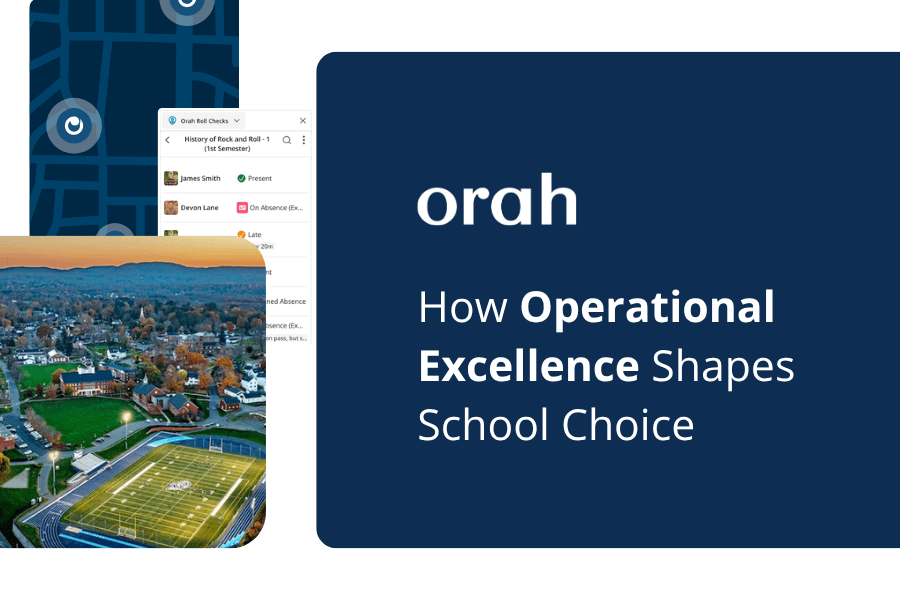What is Social Emotional Learning (SEL): Why It Matters & How You Can Start Using It Today
Tiago Penteado
•
March 6, 2023
_.png)
Social-emotional learning (SEL) is a comprehensive approach to teaching students the skills they need to develop into emotionally intelligent, socially responsible individuals.
As educators, it’s our job to ensure that all students have the emotional and social skills needed for success in school and beyond. Social Emotional Learning (SEL) is a powerful tool that helps us do just that – by teaching students how to:
- Understand their own emotions
- Form positive relationships with others
- Manage emotions effectively
- Set meaningful goals for themselves
- Make responsible decisions
SEL not only improves student wellness and academic performance but also gives them the tools they need to thrive in life. By investing in SEL initiatives in our classrooms, we can help create a generation of emotionally intelligent individuals who are prepared for whatever challenges come their way.
In this article:
- What is Social Emotional Learning (SEL)?
- The Five Core Social and Emotional Learning Competencies
- Why is Social and Emotional Learning Important?
- The Role of Educators in SEL
- How Educators Can Approach Social and Emotional Learning in Schools
- Benchmark Your SEL Program Before You Start: How to Measure Student Engagement
- How to Make Sure Your Social-Emotional Learning Programs are Culturally Inclusive
- The Benefits of SEL programs
- What does the research say about Social-Emotional Learning (SEL)?
- How to Start Using SEL in Your Classroom Today
- About Nurture
- References
What is Social-Emotional Learning (SEL)?
Social Emotional Learning (SEL) is a comprehensive approach to teaching students the social and emotional skills they need to develop into emotionally intelligent, socially responsible individuals. SEL helps students recognize and understand their own emotions and those of others, form positive relationships with others, handle challenging situations with integrity and empathy, set goals for themselves, make informed decisions, and take responsible actions.
The Five Core Social and Emotional Learning Competencies
The five core SEL competencies as outlined by the Collaborative for Academic, Social, and Emotional Learning (CASEL) are:
- Self-Awareness – understanding one’s own emotions, values, beliefs and motivations.
- Self-Management – managing one’s emotions and behavior, setting goals and developing effective strategies for achieving them.
- Social Awareness – empathizing with others, recognizing the perspectives of those around them, and understanding social and cultural influences on behavior.
- Relationship Skills – developing and maintaining healthy relationships with others, engaging in teamwork and collaboration, and resolving conflicts constructively.
- Responsible Decision Making – making sound decisions that take into account the well-being of oneself and others.
By teaching these core competencies in our classrooms, we can help students develop into emotionally intelligent and socially responsible individuals.
Why is Social and Emotional Learning Important?
SEL promotes the development of important life skills, such as self-awareness, self-management, empathy, relationship skills, and responsible decision-making. These skills are essential for success in school and beyond – in college, career and life.
When students have the skills to think critically, make informed decisions, and understand their own needs and feelings as well as those of others around them, they are empowered to thrive in school and beyond.
The Role of Educators in SEL
Ultimately, it is up to educators to foster a positive environment for social and emotional development that will give students the skills they need to succeed in life. It is, however, easier said than done.
Educators play an undeniably important role in helping students prepare for the future. However, merely relying on them to deliver positive social, emotional and academic student outcomes is not enough. The success or failure of a student can be profoundly influenced by their school climate and home environment. This is why it's so essential for schools to have a system in place for tracking student engagement beyond what can be observed in the classroom setting.
It's also important then that students are engaged in an effective social-emotional learning curriculum, so that educators can help students develop into emotionally intelligent and socially responsible individuals. As well as identify those that may need more specialised help.
With these skills in their toolbox, students are able to negotiate challenging emotions, manage difficult situations with integrity and empathy, set meaningful goals for themselves, and make informed decisions that benefit themselves and the community. Social-emotional learning not only benefits students in school, but it also gives them the tools they need to succeed in the future.
How Educators Can Approach Social and Emotional Learning in Schools
Educators can implement evidence-based strategies to approach SEL in schools. One such strategy is having students engage in self-reflection activities. Self-reflection helps students gain awareness of their emotions, thoughts, and responses to challenging situations. This activity also helps them identify areas where they need help and develop strategies for addressing those needs.
Additionally, educators can foster a safe and supportive learning environment. This involves creating an atmosphere where students feel respected and free to express themselves without judgement or fear of repercussions. Finally, teachers should foster social-emotional skills through problem-solving activities that involve collaboration and conflict resolution. By giving students the opportunity to work together on projects and solve conflicts,
Benchmark Your SEL Program Before You Start: How to Measure Student Engagement
In order to measure student engagement, the most popular and accessible options to schools are conversational surveys, student interviews and even observation sessions. The survey should be taken mid-semester and the observation should be unbiased by an administrator. Authentic engagement is more than mere compliance; it involves active involvement such as listening, asking questions, taking notes or participating in discussions. Students must do more than just answer questions during a “sit and get” session. With the right assessment tools, teachers can measure student engagement more effectively.
Once the data is collected, teachers can use it to determine what is working in their classroom and what needs improvement. Armed with this information they can then design individualized instruction that meets their students’ needs, improves their engagement and leads to a successful learning experience.
By taking the time to measure student engagement, teachers can create a more meaningful learning experience for all their students. It’s time well spent and will pay dividends in the long run.
ℹ️ Orah offers conversational surveys as part of Nurture, the modern solution for schools to radically improve social and emotional wellbeing in their classrooms. Ready to try it for yourself? Sign up to a risk-free trial and send your first conversational survey using our research-backed questions presets.

How to Make Sure Your Social-Emotional Learning Programs are Culturally Inclusive
It's important for SEL programs to be culturally inclusive in order to ensure that all students are able to benefit from them. To make sure your SEL program is culturally inclusive, there are several key steps you can take:
First, it’s essential that educators assess the cultural needs of their student body and create an environment where diverse perspectives are valued and respected.
Educators should also strive to incorporate multiple cultures into the curriculum by including books, films, and other materials that reflect different backgrounds and experiences. These seemingly small considerations go a long way to create opportunities for meaningful collaboration between students of different backgrounds, and will help foster mutual understanding within the classroom as well as provide an opportunity for learning about each other’s cultures.
Finally, involving families in SEL initiatives will enable parents and caregivers to support their children’s social-emotional development at home while strengthening relationships between school staff members and families of different cultural backgrounds.
The Benefits of SEL programs
Improved academic performance
- A meta-analysis of 213 SEL programs across the U.S., published in 2015, found that students who participated in such programs had an 11 percentile point gain on academic achievement tests, significantly better than those who did not participate in the program.
Enhanced self-awareness, self-confidence and resilience IN STUDENTS
- SEL programs can help students become more aware of their emotions and how to manage them. They can also learn to handle difficult situations in a constructive manner and develop resilience in the face of adversity. Additionally, SEL encourages students to take an active role in developing self-efficacy and self-confidence by setting goals and working towards them.
Greater understanding of and respect for others
- SEL can help foster greater understanding amongst students for the diversity of those around them. This includes differences in race, culture, gender and background. SEL encourages students to be more tolerant, open-minded and compassionate towards others. In addition, SEL programs can help create more harmonious relationships by teaching communication skills such as active listening and problem
Increased empathy and social competence
- SEL can help students to become more aware of their own feelings as well as those of others. This increased empathy allows them to better understand and relate to people from diverse backgrounds, increasing social competence.
Better ability to handle challenging situations
- Through SEL, students learn how to better manage their emotions and reactions in difficult situations. This can be beneficial in both their academic and personal lives, as they can successfully navigate challenging situations with more ease and resilience.
Reduction in disruptive and aggressive STUDENT behavior
- SEL can help students to better recognize and manage their emotions, as well as to develop effective coping strategies. This can lead to a decrease in disruptive and aggressive behavior in the classroom, creating a more positive and productive learning environment.
Improved relationships with teachers and peers
- When students are able to manage their emotions, it can lead to improved relationships with teachers and peers. This is beneficial for the entire school environment, as it helps to create a more positive and supportive atmosphere. In addition, SEL activities can also help students develop stronger communication skills and empathy towards others.
What does the research say about Social-Emotional Learning (SEL)?
Research has consistently demonstrated the effectiveness of Social-Emotional Learning (SEL) for students in both academic and non-academic contexts. From the 2015 meta-analysis of 213 SEL programs, the study noted a 11% point increase in academic achievement test results from students that participated in an SEL program, a notable correlation between SEL and academic success.
Comparatively, a 2016 review of 63 studies also reported that students who received SEL instruction exhibited increased prosocial behavior, improved peer relationships, and decreased disciplinary referrals.
These results are encouraging and show that SEL can have a positive impact on student development. It is important to note, however, that these effects may vary depending on the specific context in which SEL is taught and implemented. Educators must be mindful of cultural considerations when teaching SEL, as certain skills may be more beneficial in some contexts than others.
Overall, the evidence indicates that SEL can be a powerful tool for helping students learn important life skills and build stronger relationships with their peers. By incorporating strategies such as self-reflection into their classrooms, educators can give their students the tools they need to succeed in life.
How to Start Using SEL in Your Classroom Today
We know now that Social-emotional skills is an important aspect of a student’s overall well-being. And research shows that students with strong SEL skills are better equipped to handle challenging situations, build positive relationships with their peers, and achieve success in academics. As such, it is crucial for educators to ensure that SEL is a priority in their classrooms.
By incorporating activities and discussions related to SEL, teachers can help create an environment that fosters positive relationships, effective communication, and problem-solving skills. Additionally, educators can use SEL strategies to help students identify and address their own feelings and manage stress more effectively.
Social-emotional learning is an important part of education that can help students develop important life skills and prepare for success in their futures. By implementing activities that focus on SEL, educators can help provide students with the necessary tools to succeed both in and out of the classroom.
About Nurture
Nurture is a modern tool for measuring student engagement and providing ongoing social-emotional learning support in schools. It provides teachers with the ability to track student progress, identify areas of improvement, and develop personalized plans for each student. The platform also allows teachers access to key insights that allow them to confidently tailor lessons to the individual needs of their students. By using Nurture, schools can ensure that their students are receiving the best possible education and support, because teachers and students are equipped to address SEL together.
Nurture offers 30-second mood check-ins for students via modern mobile apps, designed to deepend their emotional intelligence by promoting frequent self-reflection. Teachers, wellbeing counsellors and designated staff can access comprehensive reports, identify records of concern and (together with Unify) track how student wellness and attendance history impacts a student's academic achievement.

Additionally, Nurture offers a customisable resource library where schools can share mood-specific videos, articles, and activities that help students develop important life skills like self-awareness, communication, problem-solving, and conflict resolution. With a comprehensive approach to social-emotional learning, you can start to foster a positive learning environment for your students.
Benchmark your student engagement now with ready-to-use conversational survey templates, or implement an instant SEL program with Nurture. Get started for free or request a demo.
References:
1. Durlak, J. A., Weissberg, R. P., Dymnicki, A. B., Taylor, R. D., & Schellinger, K. B. (2011). The impact of enhancing students' social and emotional learning: A meta-analysis of school-based universal interventions. Child Development, 82(1), 405-432.
2. Sklad, M., Raver, C. C., Melnick, S. A., Jenkins, J. R., & Weisberg, R. P. (2016). The effectiveness of early social-emotional learning interventions: A meta-analysis. Child Development, 87(1), 345-362. doi:10.1111/cdev.12499
3. Jones, S., & Bouffard, S. (2017). Culturally responsive social and emotional learning: A review of the evidence. American Journal of Community Psychology, 60(3-4), 291–303. doi:10.1002/ajcp.12235
Download your guide to knowing where students are
When you sign up, we'll send you a guide detailing what it takes to setup your daily operations to maintain student location awareness using your routine school processes like attendance, student leave, late arrivals, early dismissals & emergencies. You'll also recieve an invite to join the Orah community and get the quarterly newsletter.














